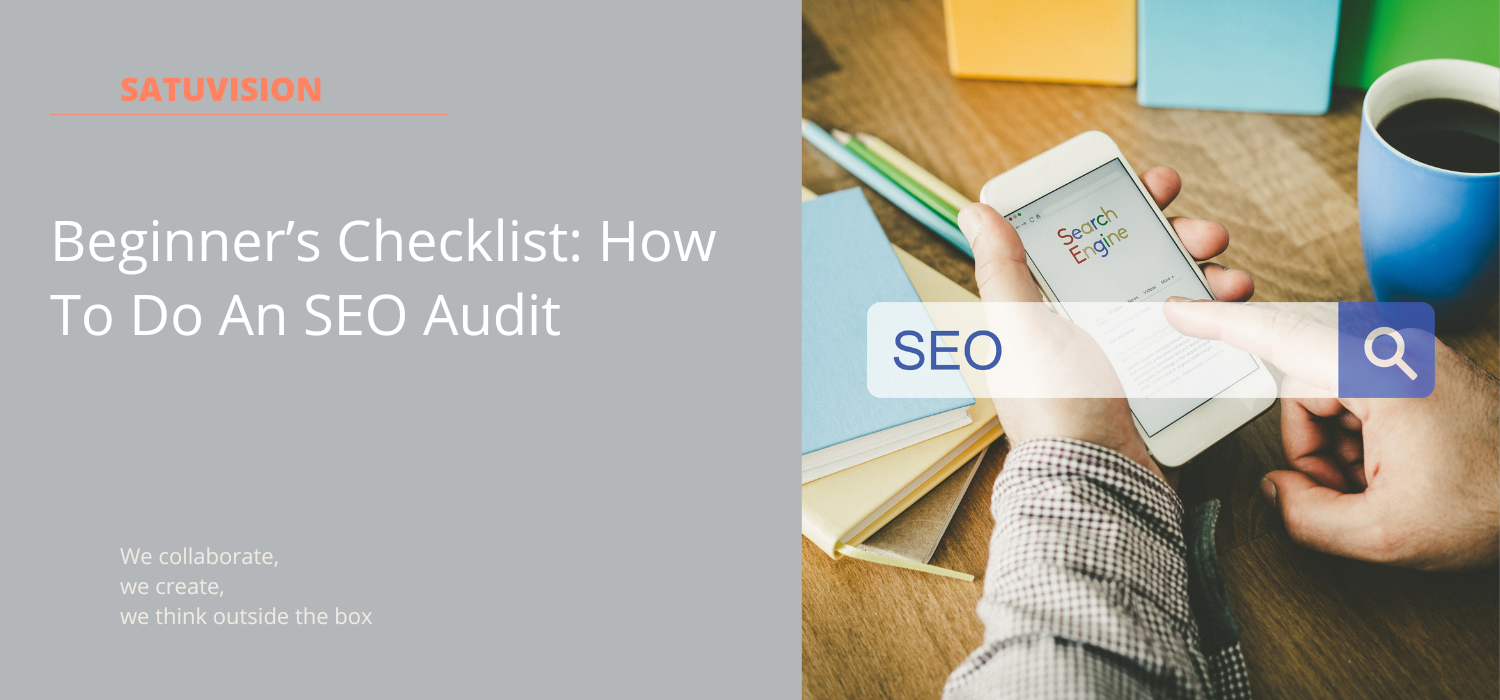SEO auditing is a process of evaluating the performance and overall health of your website in terms of search engine optimization (SEO). There are several benefits to conducting an SEO audit on your website, including the following:
- Identifying opportunities for improvements: An SEO audit allows you to identify areas of your website that affect your website negatively and helps you to identify opportunities for SEO performance growth.
- Increasing visibility and rankings: By identifying and addressing areas of improvement, an SEO audit can help increase your website’s visibility and rankings in search engine results pages.
- Staying competitive: By conducting regular SEO audits, you can keep your website updated and optimized. This can help your website perform well on search engine results pages. At the very least, we recommend doing a yearly SEO audit.
There are ALOT of metrics to cover on an SEO audit. It is a very tedious process, however, we promise that all the hard work will pay off in the long term. In this article, we will show you some of the important steps of SEO auditing your website. Remember, there are actually a lot more metrics inside an SEO Audit, however, following this checklist is a good start.
Jump to:
Auditing Tools
There are many ways of doing SEO auditing, either manually or using tools that can analyze different metrics on a single analysis.
Tools that we love to use are SEMrush, ScreamingFrogs & Ahrefs. Although using these tools can be very helpful, the most obvious downside of these tools is that it is not free. In fact, some of these tools can be quite expensive and are usually having subscription-based pricing.
Overall, SEO audit tools can be very helpful in identifying areas for improvement on your website, but it is best to use them with a solid understanding of SEO principles and use multiple tools to get an overview of your performance to improve your website.

Organic Traffic
Organic traffic is website visitors that landed on your website without using any paid channels or social media. Basically, these visitors found your website from search engines. Keep in mind that visitors that landed on your page whenever they type in your website URL on their browser are classified as direct traffic, NOT organic traffic.
Since these visitors are coming from search engines, it directly correlates with your SERP’s (Search Engine Result Pages) performance which is directly tied to your SEO.
To check direct traffic, you can use Google Analytics 4. You can find it on the left tabs.
Click On Reports -> Acquisition -> Traffic acquisition.

Your organic traffic should be identified as Organic Search. The screenshot below is the total number of unique organic traffic.

Whilst doing SEO Audits, you should measure the growth or decline of your organic traffic in different time periods. Such as week-to-week, month-to-month, or year-to-year. Ideally, you want to have a gradual increase.
On page Audit
On-page SEO is optimizing the content & discoverability of your website for users and searchers. On-page SEO auditing makes sure all your pages contain the right keywords, page contents, page titles, meta tags, header tags, internal & external links, path URLs, and images alt text.
We have written an article that discusses each of the mentioned metrics in detail. To learn more about On-page SEO Auditing: On-Page SEO Auditing Introductory Guide: Improve Your Website Performance
Mobile Friendly Test
In today’s era, websites received a lot of mobiles traffic. A study suggests that 60% of website traffic is coming from mobile users. To adapt to this, your web pages must be responsive, which means, when a page is viewed on different devices, it will optimize itself to the size of that device. To check on your website’s mobile friendliness, you may use Google’s Mobile Friendly test. Google Search Console also allows you to find any unusable pages for mobile users.

Here are some elements that may improve your website’s mobile friendliness.
Responsive Web Design (RWD): Instead of using a mobile-specific page, your web design should be able to render perfectly for different resolutions and device sizes.
Consider Using Accelerated Mobile Pages (AMP): An open-source HTML framework to optimize mobile web browsing with the intention to improve webpages load faster for mobile devices.
Avoid Using Pop-ups: Pop-ups can be extremely distracting and annoying, especially for smaller devices. This is not recommended when optimizing for mobile user experience.
Larger Interactive Buttons: If your web pages are using interactive buttons, keep in mind to make them bigger for mobile devices.Font size: Your body fonts are best kept at around 16px, anything below 15px is very hard to read on smaller devices.
Page Speed
Faster page speed equals higher ranking in SERPs, especially Google. To check your page speed, you can visit Google’s PageSpeed Insight. Here, Google will also provide you with recommendations and identify opportunities for improving your page speed. Keep in mind that your page speed differs on desktop and mobile devices, the score will also be affected by your internet connection. You must optimize for both types of devices. It is recommended to achieve a score above 80.

Core Web Vitals
Core Web Vitals are Google’s estimation of your overall website’s user experience using real-world usage data.

Here are the 3 key metrics:
LCP (Largest Contentful Paint): The largest element of a web page should load at most 2.5 seconds.
FID (First Input Delay): Your interactive elements such as buttons should respond quickly with less than 100ms.
CLS (Cumulative Layout Shifts): This element is not measured in speed, instead it’s measured in how an element in your webpage may unexpectedly shift during a visitor’s page session. A good page should have fewer content shifts. The optimal score here is lower than 0.1.
To check on your website’s core web vitals, you may visit Google Search Console. Choose ‘Experience’ tab on the left-hand side and then choose ‘Core Web Vitals’.

Indexing Issues
The database of different websites and URLs that SERPs such as Google crawl and store for its algorithm to rank is known as an index. This means, if your page is not indexed, it is stored on the SERPs database. Your unindexed page has no ability to rank or to be shown as a search result on SERPs.
To check whether you have unindexed pages, you may use Google Search Console. To do this, go to the tabs on the left-hand side, choose your property, choose ‘Indexing’ and then choose ‘Pages’.

In the example above, you can see that there are 214 pages that are not indexed and 327 that are indexed. If you scroll down, you can find the reason why these pages are not indexed.

If you click on any of the explanations, you can find the URLs of unindexed pages for you or your webmasters to fix.
Page Duplication
A single page in your domain may have different versions, this is especially true for larger domains. However, it is important that users can only access one version of the page. This is where Canonical Tags comes to fix this problem. Your Canonical Tags will show search engine crawlers which of these versions are the original, or the master copy. Not having canonical tags will hurt the SEO performance of your website because it will be identified as duplicated page, which may cause crawling or indexing issues, as well as affect your link authority (the passing of your page’s domain authority to your other pages). Every page should have a canonical tag, even if it doesn’t have a different version.
How do you check whether search engines such as Google consider your page canonical or not? Again there are many tools, but we love to use Moz Tool Bar (it’s free) as our Google Chrome extension.
Broken Link
Here again, a lot of tools such as SEMrush provide you with an analysis of existing broken links on your website. However, as we mentioned earlier, these tools are not free. Broken links are really bad for your website because it disrupts the user experience. Search engines want to provide the best page results to the searches, that’s why having a broken link can be hurtful for your rankings.
For a free tool, you may use brokenlinkcheck. It’s a great tool but might take some time to scan through your website.

In the screenshot above, this tool provides you with the Link text or Anchor text, your website’s URL where this broken link can be found, and the server response of the broken link. As an example, a server response 503 means that the website’s host is not ready to handle a request.
Backlink Quality
The final step in performing an SEO audit is to analyze the websites of your competitors. The key is to keep an eye on what your competitors are doing. Take note of the differences in the analysis results, which can then be used on your website.
Different tools provide you with different features that you can compare with your competitors. For example, SEMrush provides the features such as Keyword Gap analysis and Backlink Gap analysis. This feature allows you to enter your domain alongside your competitors, and the tools will provide you with data on what your competitors have that you don’t.
You can also compare the Domain Authority of your domain to your direct competitors. Domain Authority, developed by Moz is a scoring system that displays between 1 – 100 where the higher the number, the higher the chances for your domain to rank higher. Your goal is to gradually increase your Domain Authority. To learn more about Domain Authority and how to improve it, you may want to read our article on Domain Authority.
Parting Words
As a reminder, this checklist doesn’t include a lot of the metrics that are required to do a complete SEO audit. Didn’t we mention in the beginning that it is a tedious process? If you are a digital marketing agency like us, then we must recommend you subscribe to SEO tools. But if you are not, we recommend following our checklist as the points in this article can be done for free.
Or
Entrust your website’s SEO auditing activities to us!
That was the discussion about the 10 things you need to do when doing an SEO audit. The above ten steps will help you get more traffic organically. Visit our other blogs to learn more about digital marketing. Visit the SATUVISION website right now! Good luck!
–




